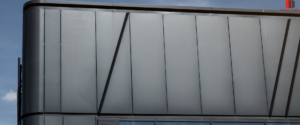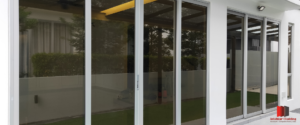In architecture, the facade is the external face or front of a building. It is the first thing that people see and can leave a lasting impression. The facade is not just about aesthetics, but it also plays a crucial role in the functionality and energy efficiency of the building. In this blog, we will explore the art of facade design and how to create beautiful and functional exteriors using facade solutions.
The facade of a building is like its face. It communicates the building’s identity and character. A well-designed facade can enhance the beauty of a building and make it stand out from the rest. There are several facade solutions available that can be used to create unique and attractive exteriors.
One of the most common facade solutions is the use of materials. The choice of materials can make a significant difference in the appearance and functionality of the facade. For example, using glass can create a sleek and modern look while allowing natural light to enter the building. Brick and stone can add texture and warmth to the facade. Metal panels can create a futuristic and industrial look. Wood can create a natural and rustic feel. The choice of materials should be based on the building’s style, purpose, and location.
Another important aspect of facade design is the use of color. Color can be used to create a mood, evoke emotions, and highlight the building’s features. For example, using bright colors can make a building stand out and attract attention. Neutral colors can create a calm and sophisticated look. The color of the facade should complement the surrounding environment and the building’s purpose.
The shape and form of the facade are also important in creating a visually appealing and functional exterior. The shape and form of the facade should be based on the building’s style, purpose, and location. For example, a curved facade can create a fluid and dynamic look. A boxy facade can create a modern and minimalistic look. The shape and form of the facade should also take into account the building’s orientation, natural light, and ventilation.
The use of technology can also play a role in facade design. For example, the use of smart glass can help regulate the building’s temperature and reduce energy consumption. The use of solar panels can help generate renewable energy and reduce the building’s carbon footprint. The use of 3D printing can help create unique and intricate designs.
The functionality of the facade is just as important as its aesthetics. The facade should be designed to provide protection from the elements, regulate the building’s temperature, and provide ventilation. The facade should also be designed to maximize natural light while minimizing heat gain and glare. The use of shading devices, such as louvers, can help reduce solar heat gain while allowing natural light to enter the building.
In conclusion, facade design is both an art and a science. The facade is the external face of the building and plays a crucial role in its identity, functionality, and energy efficiency. The use of materials, color, shape, form, technology, and functionality can all contribute to creating a beautiful and functional facade. The choice of facade solutions should be based on the building’s style, purpose, and location. A well-designed facade can enhance the beauty of a building and make it stand out from the rest.




